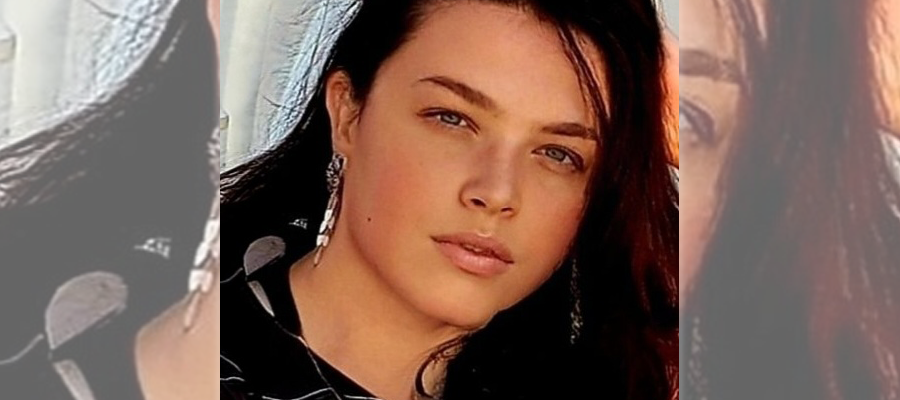
By Coralyn Loomis
The first symptom that hit me the hardest was fatigue. I was always tired and assumed it was due to being a mom and commuting to work over an hour away. But at 27 years old, I felt like I should have had more energy. I went to my general practitioner, who conducted several tests. When they all came back negative, she assumed I was depressed and wrote me a prescription for Wellbutrin. After taking it for a few months, I could add neurological side effects to my fatigue. I stopped the meds and continued struggling with the fatigue without knowing the cause.
Fast-forward two years. I had been struggling to lose weight and was hitting the gym regularly, trying to shrink my stomach that always appeared to be in the second trimester. One day, while doing ab exercises, I felt a strange sensation and cut my workout short. Later that night, my stomach felt like it was on fire. I thought maybe I’d done too many crunches, but then a fever developed. I went to an urgent care center, and a urine test revealed an excessive protein. They sent me to the ER, where the doctor performed a CT scan and pelvic ultrasound. After reviewing the results, he returned to my room with a look of grave concern.
“You have several large growths in your pelvic area and one that has ruptured,” he said.
He called my gynecologist to see if I needed emergency surgery. My gynecologist recommended instead that I see her. I left the ER with some pain meds and a follow-up referral. This would begin the next eight years of my endometriosis journey.
I’m not sure my gynecologist at the time of my ER visit actually looked at the images from the ER. Nor do I think she looked carefully at the radiologist’s report. She informed me that I had a 2cm cyst that wasn’t a big deal—a huge variation from the concern of the ER doctor. I was confused about how it went from a big emergency to no issue at all. I felt in my bones that this wasn’t right. I knew my body and trusted that how I felt wasn’t normal.
I found another gynecologist who performed an ultrasound and confirmed that I had four large cysts, each 8cm to 10cm. She said they were called endometriomas, or “chocolate cysts,” and explained to me what endometriosis was. I was almost 30 years old, and this was my first time hearing about this disease. The diagnosis surprised me because I didn’t think I had issues with my period other than it being heavy and clotty. I had painful cramps and had to take Advil, but I assumed that was normal. I never had trouble getting pregnant and never missed my period.
My doctor put me on birth control to try to manage the symptoms, but the cysts didn’t shrink as the months passed, and the pain became more intense and frequent. Through my research, I learned that endometriomas never shrink on their own. They either continue growing and risk ovarian torsion or rupture and spill blood into the pelvic cavity, causing severe pain. I brought this to the attention of my gynecologist and scheduled my first laparoscopic surgery, approximately eight months after my ER visit.
My surgery went well. My gynecologist said she got everything out, removing the cysts and additional adhesions from my ovaries. Recovery was a bit harsher than I expected, as I was pretty sore for the first two weeks. However, once I recovered, I felt fantastic. I dropped 22 pounds, began running, and had a lot of energy—but it wouldn’t last.
About three years later, my energy began to fade again. I felt bloated. The pain returned and was more severe. Periods hurt. My back and hips ached. I couldn’t work out without significant pain in my stomach for days after. Concerned that the endometriosis was back, I scheduled an appointment. My gynecologist did a pelvic exam and said she could feel possible cysts. An ultrasound confirmed her suspicion.
I scheduled another surgery and was optimistic that I’d come out feeling great again, but the news from my doctor afterward was heartbreaking.
“I did the best I could,” she said, “but it’s really bad. You have a lot of adhesions. Your tubes are mangled, and there’s a lot of scar tissue around the back side of your pelvis that I couldn’t get. You have a frozen pelvis and will need robotic surgery.”
I broke into tears. I was just 34 and felt she was saying I would lose my reproductive organs. It was more than I could handle. She told me she was sorry and that we would talk more at my next appointment.
My recovery was swift, though I didn’t feel as good as I did after the first surgery. When I met with my doctor again, it was primarily about me going on Lupron to stop the endometriosis growth from getting worse until I could have surgery again. It would essentially put me into chemically induced menopause. I decided against it due to the myriad of potential side effects. Instead, I began looking for an endometriosis specialist.
About a year after the surgery, I found a specialist in New York who scheduled a pelvic MRI. It confirmed that I had Stage IV endometriosis that included a frozen pelvis, significant adhesions around my pelvic area, ovaries stuck to each other and to my colon, and possible adenomyosis and fibroids. They scheduled robotic surgery for October 2022.
I was pretty nervous, but I had my mom and daughter there with me, and the hospital was beautiful with a view of the city. What threw me off, though, was that they had me walk to the operating room. For my other surgeries, I was wheeled in on Valium. I’m not usually afraid, but walking into the OR and lying on the bed without a good sedative drove up my nerves. If they hadn’t strapped me in, I think I would have gotten up and run as I saw the robot in all its glory overhead. As a technical consultant, I was curious about its functionality. As a human being, I was half out the door. But I put on my big girl pants and stayed still as they put me out. When I came to, I was in a huge post-operating room with several other patients around me. Since we were still in COVID protocols, I was mostly alone as my daughter and mom had to wait to see me. But I had a wonderful nurse who made me feel like I wasn’t alone. She talked to me about my life and made sure I was warm and comfortable. Nothing is better than a great nurse who truly cares about their patients, and I am grateful to mine for making such a difference for me.
When the doctor came to see me, she said the surgery was difficult.
“You had so many adhesions and scar tissue, and it took a long time to get it all, but I think we did it,” she said.
She said the surgeon who did my first two surgeries drained the cysts without removing the cyst walls, which allowed the cysts to return. She also had to remove one of my fallopian tubes because it was mangled beyond repair. The pathology report said I had several large endometriomas, fibrosis all over my ureters and colon, and rectal vaginal endometriosis. But as severe as it was, I only lost one tube, and my doctor was confident I would heal well. I was relieved.
It’s been six months since that robotic surgery, and I’m feeling good. I’m not sure where I’ll go from here. I’m certain this long-term disease isn’t finished with me, but I’m happy that I have an endometriosis specialist who knows the disease well and is an expert surgeon. That gives me hope.
The medical community needs to know that this is much more than a gynecological issue. It is a systemic disease. We need more experts who specialize in endometriosis and the complexity of the disease so that women can get the support and timely recognition that’s imperative in fighting this chronic condition.
Editor's note: Would you like to contribute to EndoStories? Click here to learn how to submit your work.
*Patient stories submitted to EndoFound.org are the patient's views, not necessarily those of the foundation. All testimonials are from real patients, may not reflect the typical patient’s experience, and are not intended to represent or guarantee that anyone will achieve the same or similar results.









